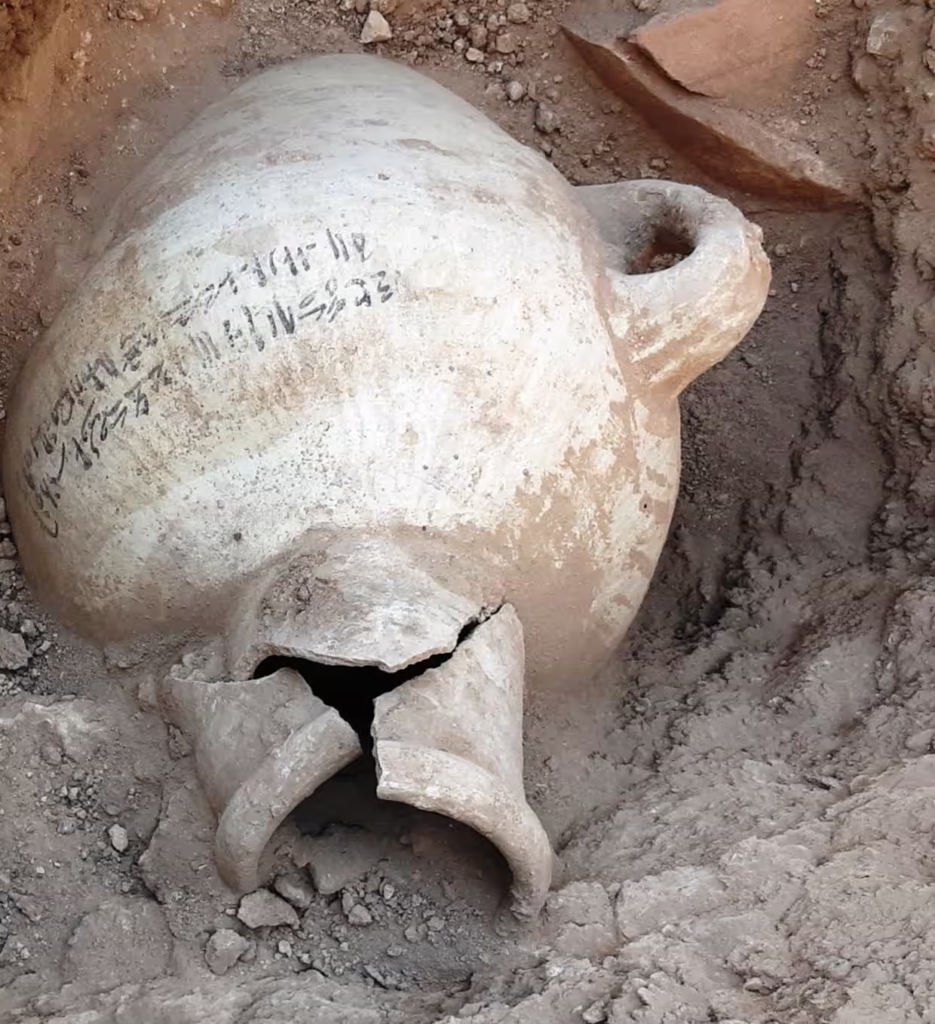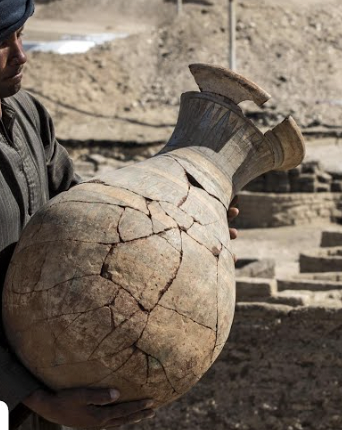
Mud-brick walls of the 3,000 year old city enclosed by a zig-zag wall (9ft tall).
Shown above is what to be believed as the largest ancient city found in Egypt. The site dates from the era of 18th-dynasty pharaoh Amenhotep III, who ruled between 1386 and 1353 B.C. and presided over an era of extraordinary wealth, power and luxury. It has been buried under the sand for thousands of years and many archeologist believe this is one of the most significant discoveries since the finding of King Tutankhamun’s Tomb. This land was not only under-control of the pharaoh Amenhotep III but continued to be used by King Tutankhamun. Many items were preserved and uncovered during the excavation of this site. These include jewelry, colored pottery, amulets, and mud-bricks that show the seals of Amenhotep III. These discoveries shows what life was like during their wealthiest years.
For more info on what it meant to archeologist: https://www.theguardian.com/world/2021/apr/09/lost-golden-city-ancient-egypt-aten-discovered#:~:text=%E2%80%9CThe%20Egyptian%20mission%20under%20Dr,Aten%2C%20ever%20uncovered%20in%20Egypt.

Finding this civilization was a major discovery in the world of archeology as many artifacts and ecofacts have been uncovered during the excavation time period. These items were able to tell stories of the past and gave us more information on what life was like nearly 3,000 years ago for these Ancient Egyptians. The mission expected to reveal untouched tombs with a variety of different items and that is exactly what they did. 22 bodies were found including both Amenhotep III and his wife Queen Tiye. Archaeological theory involves examining the cultural and symbolic significance of artifacts. The golden objects and other artifacts found in the city provide insights into the culture, beliefs, and practices of the ancient Egyptians who lived there. Along with this, the discovery of these objects created from a variety of materials, including gold gives us evidence of the wealth in this society.


After the son Akhenaten fled the city archeologist were able to study the area and see that four distinct settlement layers were shown. This means only four groups of people used this land until it eventually became untouched by humans. Because of this the city seems to be so well preserved. Many archeologist question why groups decided to leave but also see it as a huge gain as we can now study everything that went into these neighborhoods. Being able to now see the life these rulers left behind gives us so much more information on what lives were like during that time period. The ‘Lost Golden City’ has been one of the most significant findings in archeology and after years of excavation they are still uncovering more.
For more info on discovery as a whole: https://www.nationalgeographic.com/history/article/lost-golden-city-luxor-discovered-archaeologists-egypt
Video Showing Artifacts and Info on History: https://youtu.be/jTpoOh7D7AY
CItation:
“3,000-Year-Old ‘lost Golden City’ of Ancient Egypt Discovered.” The Guardian, Guardian News and Media, 9 Apr. 2021, www.theguardian.com/world/2021/apr/09/lost-golden-city-ancient-egypt-aten-discovered#:~:text=%E2%80%9CThe%20Egyptian%20mission%20under%20Dr,Aten%2C%20ever%20uncovered%20in%20Egypt.
Blakemore, Erin. “‘lost Golden City of Luxor’ Discovered by Archaeologists in Egypt.” History, National Geographic, 26 Jan. 2022, www.nationalgeographic.com/history/article/lost-golden-city-luxor-discovered-archaeologists-egypt.

Apart from gold, what other artifacts of this site “show what life was like during their wealthiest years”? Why were/are they considered embodiments of wealth — or in other words, how were they significant to the era of 18th-dynasty pharaoh Amenhotep III?
The discovery of this lost city gave archaeologist a wide variety of different artifacts and structures that showed the wealth this city possessed. Some of these items could be scarab beetle amulets, rings, colored pottery vessels, and mud-bricks that showed the seal of Amenhotep III. He ruled during an era of great wealth in Egypt and these artifacts show that wealth and what the society in Egypt looked like during his rule. Finding these items showed the economic prosperity at that time. They can also show cultural practices of this city and some of their technological advancements.